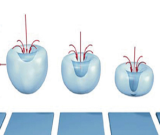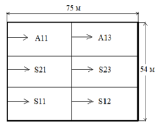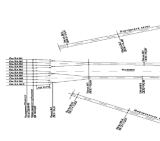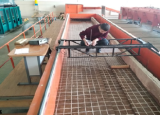JOURNAL OF “IRRIGATION AND MELIORATION”
 AUTOREGULATORY OF WATER LEVEL FOR CHANNELS OF PARABOLIC SECTION AND ITS CAPACITY
AUTOREGULATORY OF WATER LEVEL FOR CHANNELS OF PARABOLIC SECTION AND ITS CAPACITY
M.-G.A.Kadirova – C.t.s., Associate Professor National Research University "Tashkent Institute of Irrigation and
Agricultural Mechanization Engineers" Abstract
The proposed design of the water level autoregulator with flexible working bodies for the channels of the parabolic section of the
irrigation system. Regulation of the water level in the upstream is carried out by means of a water level regulator in the upstream.
To determine the flow capacity of the gate of this design, a theoretical formula was derived and experimental studies were carried
out, as a result of which the values of the flow coefficients included in this formula were obtained. The study was carried out on an
experimental installation by the method of physical modeling of the model and nature. As a result of mathematical processing of
the gate model studies, a dependence graph was constructed, which showed that the gate flow rate, depending on the ratio of the
thickness of the water layer flowing through the gate to the gate height, obeys a parabolic dependence. At the same time, the spread
of points, the obtained values of the flow coefficient and relative to the values of the parabolic dependence was +4...5 percent. In
addition, studies were conducted on the accuracy of regulating a given water level in front of the water level autoregulator. They
showed that the accuracy of level control is +1 cm on the model, which is no more than +5 percent of the specified water depth in the
upper reaches. This automatic water level regulator performs the function of a partition structure, does not require large costs, can
be portable and stationary, it is not metal-intensive, lightweight, transportable, combines the functions of stabilizing the required
water level in the channel, dumping excess water, fin and debris, provides the necessary flow of water into irrigation channels.
14.06.2023
 USING FLOW REGULATORS TO CONTROL THE MODES OF IRRIGATION PUMPING STATIONS
USING FLOW REGULATORS TO CONTROL THE MODES OF IRRIGATION PUMPING STATIONS
O.Y.Glovatsky – d.t.s., professor, Research Institute of Irrigation and Water Problems (RIIWP), R.R.Ergashev – d.t.s., professor,
Tashkent Institute of Irrigation and Agricultural Mechanization Engineers (TIIAME), B.Hamdamov – c.t.s., associate professor,
Tashkent State Technical University (TSTU), B.T.Kholbutaev – doctoral student, A.S.Gazaryan – doctoral student Research Institute
of Irrigation and Water Problems (RIIWP), Z.A.Abduvaliev – undergraduate, Tashkent State Technical University
Abstract
The purpose of the development is to improve the system of water resources management and operation of water facilities in
accordance with the Decree of the President of the Republic of Uzbekistan and the Cabinet of Ministers of the Republic of Uzbekistan. To achieve the goal of ensuring the reliable operation of pumping stations with energy-saving and energy-efficient technologies
for regulating the mode, it is necessary to solve the problems of coordinating the operating modes of the pumping station units
with the operating modes of the partitioning structures in the conditions of emptying and filling the pools of the main canal with
water. The article considers the implementation of the water distribution control method using new designs of "floating spreaders".
A similar structure in the form of a zapan was installed in the fore chambers of the Amu Bukhara and Karshi cascades, and later in
the form of a polygonal spreader in the fore chambers of other stations. When performing the work, methods of hydraulic study
of the flow structure for various sections at maximum and minimum water levels were used to ensure the normal functioning of
water intakes. Control methods make it possible to reduce unfavorable hydraulic modes of water supply to the pumps during the
start-up of the units. This article discusses the operation of various controllers in stationary, dynamic and transient modes. Some
automatic regulators themselves create fluctuations in the water in the channel. Automatic regulators have to work under conditions
of more or less prolonged disturbances. The article allowed idealization, which does not take into account the change in the flow rate
with a change in pressure, the influence of wave resistance on the oscillations of a floating body. In some cases, the authors neglect
the velocity pressure. The free flow rate is determined by integration and is calculated over the area of water outflow. Water level
regulators of the “floating gate” type, even without taking into account wave phenomena in the flow, cannot accurately maintain a
given horizon; they are static regulators. canal, thereby increasing the efficiency of water supply facilities management during the
operation of pumping stations.
Key words: pumping station, fore-chamber, regime control, water distribution, automatic level regulators, partitioning structure.
14.06.2023
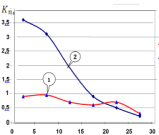 DETERMINATION OF GROUNDWATER BALANCE REGIONS OF FERGANA REGION
DETERMINATION OF GROUNDWATER BALANCE REGIONS OF FERGANA REGION
B.K.Saliev – Doctor of Technical Sciences, Associate Professor, E.I.Berdiyorov – doctorate, M.O.Ruziev – doctorate of the
Research Institute of Irrigation and Water Problems
Abstract
The article that the reclamation conditions in the territory of the Logan village of the Fergana region are deteriorating, the
groundwater level is rising to the surface. Technogenic causes of groundwater inflow from mountainous areas, silting and flooding
have been identified. To determine the effectiveness of the applied reclamation measures, field measurements were carried out and
data for 2016-2020 were analyzed. Since 2016, as a result of the use of reclamation measures (deepening of drainage ditches, an
increase in the number of new drainage wells), the areas covered with silt have decreased. The total length of horizontal open ditches
in the district was 7,249 m, with an average discharge of 82,8 l/s, per day – 107,308.8 m3, during the year – 38,63 million m3/year. The
total area has been unsatisfactory since 1863 (groundwater depth from 1,5 to 2 m) and satisfactory from 22,81% (more than 2 m). In
total, 53,14%, or more than half, of land reclamation has been improved.
Key words: groundwater, sedimentation, melioration, alluvial-proluvial deposits, man-made processes, engineering
protection systems.
14.06.2023
 THE DYNAMICS OF SILTING OF THE CHANNEL RESERVOIR OF THE TUYAMUYUN HYDROELECTRIC COMPLEX
THE DYNAMICS OF SILTING OF THE CHANNEL RESERVOIR OF THE TUYAMUYUN HYDROELECTRIC COMPLEX
M.Ikramova – DSc, professor, K.Akhmedkhojaeva – junior researche,
Scientific Research Institute of Irrigation and Water Problems
I.Akhmedkhojaeva – PhD, professor
«Tashkent institute of irrigation and Agricultural Mechanization Engineers» National Research University;
A.Khodjiev – PhD, doctoral student,
Research Institute for Environmental and Nature Protection Technologies
Abstract
For the Republic of Uzbekistan, the assessment of the degree of siltation of reservoirs is of paramount importance, it is important
to take into account changes in the process of siltation in the past and trends in its future changes when planning and managing
water resources. The article deals with the issues of siltation of the Channel Reservoir of the Tyuyamuyun hydrocomplex, provides ananalysis of field observations of the process of siltation of the reservoir from the beginning of its commissioning. The distribution of
deposits over the basin of the reservoir under the existing mode of operation was studied. During the period of operation of the TMGU
reservoirs, the initial capacity of the Channel reservoir, which is 2340 million m3 according to the project, decreased to 1428 million
m3 by 2020 and the volume of siltation amounted to 912 million m3, i.e. is less than 50% of the design volume. The article presents
a methodology for calculating the silting of the reservoir. The reservoir siltation forecast was made based on a comparison of design
characteristics, taking into account the stage of reservoir siltation at the time of the estimated time in a low-water, medium-water or
high-water year.
Key words: reservoir, siltation, reservoir siltation calculation method, reservoir storage capacity.
14.06.2023
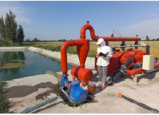 EVALUATION OF THE DISCHARGE COEFFICIENT’S EFFECT ON WATER DISTRIBUTION IN THE SPRINKLER IRRIGATION SYSTEM
EVALUATION OF THE DISCHARGE COEFFICIENT’S EFFECT ON WATER DISTRIBUTION IN THE SPRINKLER IRRIGATION SYSTEM
A.Arifjanov – DSc, Professor “Tashkent Institute of Irrigation and Agricultural Mechanization Engineers” National research
university
T. Kaletova – DSc, Slovak university of agriculture in Nitra, “Tashkent Institute of Irrigation and Agricultural Mechanization
Engineers” National research university
X.Jalilova – Master student “Tashkent Institute of Irrigation and Agricultural Mechanization Engineers” National research
university
Abstract
In the article, experimental work was carried out on the evaluation of the influence of the discharge coefficient on the
distribution of water in the sprinkler irrigation system. The experiment was carried out at the university's educational scientific
training place located in Urtachirchik district of Tashkent region. During the study, the amount of discharge from each nozzle of
the sprinkler was measured. Also, the amount of change in the length of the water distribution was measured. According to the
obtained results, the discharge coefficient was calculated according to the formula for calculating discharge in pipes. According to
the calculated values, the connection of the flow coefficient, pressure and tap diameters was made. The sprinkler irrigation system
selected to ensure uniform wetting was evaluated during the experiment. It is known that the average discharge of 1-1.5 liters
of water per second from the selected sprinkler brand and 0.6 atm. from the filter station pressure loss and 3 different radiuses
were determined. The distribution radius was determined according to the output discharge and sprinkler rotation frequency. The
effect and change of head loss on discharge was evaluated. A general formula for the coefficient of resistance affecting discharge
was developed. As a result of the research, the relationship between the water flow rate from the sprinkler and the change in the
diameter of the nozzle was brought. It is possible to calculate the amount of the coefficient representing the discharge resistance
by entering the values of the sprinkler pressure and the diameter of the nozzle through the connection.
Key words: sprinkler, discharge, discharge coefficient, water distribution
14.06.2023
 ASSESSMENT OF THE LOAD ON THE COLLECTORDRAINAGE SYSTEM IN AREAS WHERE WATER-SAVING TECHNOLOGIES ARE APPLIED А.Fatxulloyev – DSc., professor, D.Abduraimova - PhD., dotsent, М.Otakhonov – PhD., dotsent, D.Allayorov – doctorate, “TIIAME" NRU
ASSESSMENT OF THE LOAD ON THE COLLECTORDRAINAGE SYSTEM IN AREAS WHERE WATER-SAVING TECHNOLOGIES ARE APPLIED А.Fatxulloyev – DSc., professor, D.Abduraimova - PhD., dotsent, М.Otakhonov – PhD., dotsent, D.Allayorov – doctorate, “TIIAME" NRU
When designing collector-drainage systems in irrigated areas, it is necessary to assess the load created by the process
of irrigation and land leaching. The article presents the results of studies of the collector-drainage load in areas where drip
irrigation systems are used. The results of studies conducted on an area of 241 hectares, where drip irrigation systems were
used by the Ferghana Global Textile cluster in the Koshtepa district of the Fergana region, are highlighted. Experimental fields
are divided into 2 parts: K-1, K-2. The magnitude of the load on the collector-drainage systems was estimated depending on
the type of soil of the experimental field, the irrigation regime. The irrigation rate enters the irrigation mode. The results of
changes in the level of groundwater are shown, with a seasonal irrigation rate of 3220 m3/ha. The conducted studies have
established that in the areas where the drip irrigation system was used, the depth of moisture did not exceed 1 meter and the
level of the underground was not reached.
Key words: drip irrigation, collector, drainage, load, irrigation mode, irrigation rate, seepage water, evaporation.
14.06.2023
 IMPROVEMENT OF CALCULATION OF HYDRAULIC PARAMETERS OF CONCRETE PRISMATIC CHANNELS А.Fatxulloyev – DSc., professor, D.Allayorov –doctorate, М.Otakhonov – PhD., doctent, D.Allayorova – engineer, K.Narimanov – student, “TIIAME" NRU
IMPROVEMENT OF CALCULATION OF HYDRAULIC PARAMETERS OF CONCRETE PRISMATIC CHANNELS А.Fatxulloyev – DSc., professor, D.Allayorov –doctorate, М.Otakhonov – PhD., doctent, D.Allayorova – engineer, K.Narimanov – student, “TIIAME" NRU
Today, the efficiency of existing irrigation network is 0.63, which is associated with high filtration and the risk of deposition
with sediment. To eliminate these problems and increase the efficiency of irrigation systems to 0.73, within the framework of
the State programs, intensive work is underway to cover the canals with concrete or reinforced concrete lining. The existing
calculation methods used in the hydraulic calculation of canals are adapted to an earth channel, and the use of these calculation
methods in channels with a concrete channel leads to a decrease in relative economic efficiency (A). When concreting the channel, the use of the conditions of the best hydraulic section allows this flow to pass along the minimum wetted perimeter,
but the possibility of using this condition in local soils is limited. According to studies conducted on the inter-farm canal K-3,
passing through the city of Gulistan, the relative economic efficiency of the channel is 80% compared to the best hydraulic
section, and some sections of the canal channel (PK34 + 74) are going on the deposition due to the fact that the maximum water
and sediment transfer capabilities of the concrete channel are not fully used. Taking into account the coefficient of the natural
slope of the canal bed soil (m=1.5) and using the program "DGU 13170", the relative economic efficiency was found that is 87%
as well as the velocity of flow was determined higher than any current state in different minimum flow discharge.
Key words: irrigation channel, hydraulic elements, concrete channel, design, the best hydraulic section.
14.06.2023
 A MODERN APPROACH TO DETERMINING THE HYDRAULIC PARAMETERS OF A RESERVOIR A.M.Arifjanov – d.s.c., professor, S.N.Xoshimov – PhD., senior lecturer "Tashkent Institute of Irrigation and Agricultural Mechanization Engineers" National research university
A MODERN APPROACH TO DETERMINING THE HYDRAULIC PARAMETERS OF A RESERVOIR A.M.Arifjanov – d.s.c., professor, S.N.Xoshimov – PhD., senior lecturer "Tashkent Institute of Irrigation and Agricultural Mechanization Engineers" National research university
The article presents an analysis of studies on the methodology for determining the change in the useful volume of
tanks using technology, which is one of the urgent problems of our time. The useful capacity of the Uzen reservoirs is
rapidly declining, so bathometric surveys of the Uzen reservoirs are required every five years. When studying the change
in useful volume, characteristic stumps were identified along the length of the object of study. Measurements were taken
with a SonTek S5 doppler and reservoir hydraulic parameters were measured in each of the representative reservoirs.
Based on the measurement data during the field studies, the hydraulic parameters of the reservoir were refined and
processed to draw conclusions about the amount of turbid sediments present in the reservoir by comparing them with
long-term statistical data and calculated parameters of the reservoir. Based on the results of the analysis, it was found
that over half a century of operation, 9.12 million м3 of muddy sediments settled in the reservoir. The total volume of the
reservoir is 30 million м3, and more than 30% of the reservoir volume is filled with silt. It was noted that the necessary
measures should be developed for the safe management of the facility.
Key words: reservoir, channels, stream, bef, dam, silt load, usable volume, water level, dead volume.
14.06.2023
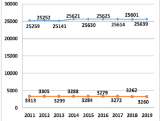 MAIN TASKS OF LAND REFORM IN UZBEKISTAN A.S.Chertovitsky – DSc, professor, Sh.K.Narbaev – PhD, assistant professor, A.R.Nurnazarov – applicant, “Tashkent Institute of irrigation and Ag-ricultural Mechanization Engineers” National Research University
MAIN TASKS OF LAND REFORM IN UZBEKISTAN A.S.Chertovitsky – DSc, professor, Sh.K.Narbaev – PhD, assistant professor, A.R.Nurnazarov – applicant, “Tashkent Institute of irrigation and Ag-ricultural Mechanization Engineers” National Research University
The main results of the ongoing land reform in the republic have been analyzed, the achieved results have been marked. The
main tasks for the further imple-mentation of land reform in the Republic have been established, including: transition to an
efficient and sustainable land-use model, ensuring a closed re-productive cycle of land use, creating and developing a market for
agricultural landFor specific purposes, modernization of the land-use system. The article studies and makes recommendations on
solution of the listed tasks of land reform, effectiveness of their implementation
Key words: degradation, reform modernization, sustainable land use, agriculture, farms, land market, tenants.
13.06.2023
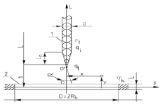 INVESTIGATING THE POSITIVE EFFECT OF AIR-ARTIFICIAL AEROIONIZER ON THE PROCESS OF REVIVAL OF SILKWORM SEEDS D.I.Abdunabiev - teacher-assistant., T.Butaev - c.t.s, аssociate Professor, Kokand branch of Tashkent State Technical University, Ismatullaeva D.A.
INVESTIGATING THE POSITIVE EFFECT OF AIR-ARTIFICIAL AEROIONIZER ON THE PROCESS OF REVIVAL OF SILKWORM SEEDS D.I.Abdunabiev - teacher-assistant., T.Butaev - c.t.s, аssociate Professor, Kokand branch of Tashkent State Technical University, Ismatullaeva D.A.
The article discusses the negative impact of embryonic development on the embryo during the spring incubation period, which
leads to a sharp drop in room temperature and humidity as a result of opening windows every 2.5-3.0 hours for 15-20 minutes.
It has been reported that the lifespan of eggs is prolonged and their viability is reduced. The results of research on the testing of
silkworm seeds in the embryonic period of an airborne artificial aeration electrotechnological device are described. Methods and
research on keeping the room environment at the required standards during the revitalization of silkworm seeds are also analyzed.
Based on the results of the study, by using an electrotechnological device, the seeds were revived in a simple way in the different
variant. In comparison, it was found to be 4.3% higher in the "Ipakchi-2" breed and 4.79% higher in the Line 27 x K-108 hybrid. The
second test experiments (April 5-11, 2022) were performed during the worm care season. The results of the experiments, which
compared the revival of silkworm seed experimental options, showed that silkworm seeds were 3.2% higher than "Ipakchi-1" and
2.1% higher than "Ipakchi-2", and the incubation period was reduced to 4 days.
Key words: silkworm seed, embryo, percentage of revival, electrotechnological device, ion, crown discharge, microbiological organisms.
13.06.2023
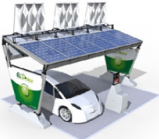 MODERN METHODS OF CHARGING MOBILE TECHNICAL DEVICES WITH ELECTRIC DRIVE A.A.Bokiev – c.t.s associate professor, A.N.Nuralieva – PhD associate professor, A.N.Botirov – doctoral student, S.S.Sultonov – doctoral student, “Tashkent Institute of Irrigation and
MODERN METHODS OF CHARGING MOBILE TECHNICAL DEVICES WITH ELECTRIC DRIVE A.A.Bokiev – c.t.s associate professor, A.N.Nuralieva – PhD associate professor, A.N.Botirov – doctoral student, S.S.Sultonov – doctoral student, “Tashkent Institute of Irrigation and
The article presents the results of preliminary studies of the current state of charging of mobile equipment with electric drive in developed countries and analyzes the issues of widespread introduction of charging stations in the conditions of
the Republic of Uzbekistan. The possibilities of creating an infrastructure for charging agricultural machinery in the field are considered. The corresponding calculations of the electrical parameters of the minitractor were carried out. Examples of
stationary and mobile variants of charging stations based on renewable energy sources are given. It is known that in parallel
with the increase in the fleet of electric vehicles, the infrastructure for charging them should also develop dynamically. As a
result of the development and implementation of fast charging technology, increased battery capacity and growing networks of
charging points, electric vehicles are rapidly becoming an increasingly practical alternative to organic fuel engines. Currently,
mobile charging stations equipped with a solar panel appear on the market of charging stations. Mobile charging station for electric vehicles, unfolds in just two minutes. Based on the conducted research, the authors developed and conducted
preliminary experiments of a prototype of a mobile Solar-Wind power plant with a nominal capacity of 5.4 kW.
Key words: Electric transport, charging stations, charging methods, charging modes, charging station infrastructure, renewable energy sources, mobile power stations.
13.06.2023
 DETERMINATION OF THE DRIVING RESISTANCE OF THE WORKING BODY FOR DEEP LOOSENING OF COTTON ROW INTERROWS T.S.Khudoyberdiev – Doctor of Technical Sciences, Professor, M.Sh.Kholdarov – doctoral student Andijan Institute of Agriculture and Agrotechnologies
DETERMINATION OF THE DRIVING RESISTANCE OF THE WORKING BODY FOR DEEP LOOSENING OF COTTON ROW INTERROWS T.S.Khudoyberdiev – Doctor of Technical Sciences, Professor, M.Sh.Kholdarov – doctoral student Andijan Institute of Agriculture and Agrotechnologies
The article presents the results of research on the study of the relationship between the tire of the deep-loosening
working body and the depth of tillage. At the same time, the known theoretical dependences are significantly simplified for
convenience and wide application.
The traction resistance of a subsoiler depends on its width and working depth. With deep loosening of cotton row spacing,
the loosening width should be b = 0.04–0.06 m, and the processing depth h = 0.35–0.4 m (relative to a flat surface), so as not to
damage the development of cotton roots. It has been established that with the selected width and depth, the traction resistance
at a speed of 1.5 m/s is 4.5–5.7 kN, and varies within and 4.7–6.0 kN at a speed of 2 m/s.
Key words: deep tillage, inter-row cultivation of cotton, traction resistance, design, depth and width of cultivation, soil
deformation, inertia force, soil moisture, aggregate, cultivator.
13.06.2023
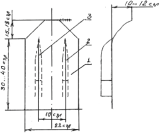 ПАХТА ЧИГИТИНИ ҚАТОРЛАБ ЁКИ ҚЎШҚАТОР ЭКУВЧИ ЭККИЧЛАР СИРПАНЧИҒИНИНГ ЎЛЧАМЛАРИНИ АНИҚЛАШ Т.С.Худойбердиев – т.ф.д., профессор, Р. Р.Йўлдошев – таянч докторант, Д.Жўраев – магистр Андижон қишлоқ хўжалиги ва агротехнологиялар институти
ПАХТА ЧИГИТИНИ ҚАТОРЛАБ ЁКИ ҚЎШҚАТОР ЭКУВЧИ ЭККИЧЛАР СИРПАНЧИҒИНИНГ ЎЛЧАМЛАРИНИ АНИҚЛАШ Т.С.Худойбердиев – т.ф.д., профессор, Р. Р.Йўлдошев – таянч докторант, Д.Жўраев – магистр Андижон қишлоқ хўжалиги ва агротехнологиялар институти
риш учун талаб этиладиган кучнинг қиймати [Рc]=400–550 Н атрофида бўлиши кераклиги аниқланган. Шунингдек, танлан-
ган эккичлар ва сирпанчиқни конструктив ўлчамларини ифодаларда иштирок этаётган катталикларнинг қийматларини
ҳисобга олсак, яъни bc= 22 см, l= 6 см, ho = 0,5 см, q = 4,5 Н/см3, тик босимнинг кучи Рc = 594 Н га тенг эканлиги аниқланган.
Ривожланган давлатларда ишлаб чиқилган ва фойдаланилаётган секцияли сеялкаларнинг конструкциясини ва секцияли
сеялкаларни ишлаб чиқиш учун қўйилган талабларни ҳисобга олган ҳолда республикамизда фойдаланилаётган чигит
экиш сеялкасини такомиллаштиришга эътибор қилиш масаласи ҳақиқтан ҳам долзарб муаммолар қаторидан жой олган.
Фойдаланилаётган моноблокли сеялкани такомиллаштириш мақсадида республикамизда биринчилар қаторида чигитни
қаторлаб ёки қўш қаторлаб экувчи секциянинг лойиҳаси ишлаб чиқилди ва синов варианти тайёрланди. Унинг асосий
қисмлари сифатида секциянинг ўзи, сирпанчиқли эккич, миқдорлагич ва унга ҳаракат узатувчи қисмлар ва зичловчи ғал-
таклар танланди.
Пахта чигитини экишда ёрғичсимон эккичлар қўлланилгани учун, сирпанчиқларга қотирилади. Сирпанчиқ эса эк-
кичлар томонидан экилаётган уруғнинг экиш чуқурлигини чегаралайди. Шуларни ҳисобга олган ҳолда пахта чигитини
қўш қатор экиш учун битта сирпанчиқда иккита эккич ўрнатилди. Улар ўрнатилган сирпанчиқнинг самарали ишлаши
учун ўлчамлари тўғри танланиши зарур.
Таянч сўзлар: пахта чигити, қўш қатор экиш, эккичлар сирпанчиғи, экиш чуқурлиги, тумшуқнинг баландлиги, нормал
куч, ишқаланиш кучи, тик куч.
02.06.2022




